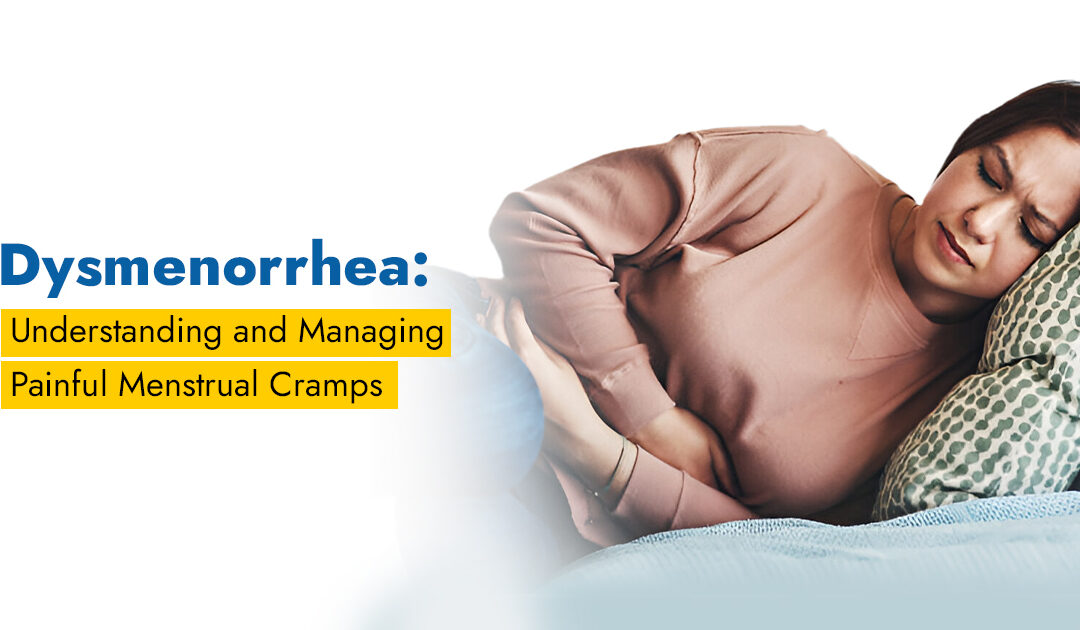Dysmenorrhea is the medical term used to describe uncomfortable periods or menstrual cramps. Period cramps are contractions and relaxations of your uterus. The muscles in your uterus contract in order to shed the uterine lining. In addition to cramps, you may experience nausea, tiredness, and diarrhea. Menstrual cramps are most likely to occur the day before or on the day of your period. Most people’s symptoms resolve within two or three days. It is typical to experience mild to moderate menstrual cramps. However, some people experience so much pain during their period that it interferes with their daily lives and stops them from doing things they enjoy. Medication and other therapies can provide relief from uncomfortable periods.
It is common to feel some pain during mensdtruation. Approximately 60% of those who have a uterus experience mild cramps throughout their menstruation. About 5% to 15% of persons experience significant period pain that interferes with their everyday activities. In most circumstances, painful periods decrease in intensity as you age.
Menstrual cramps rarely create issues beyond interrupting your normal life. However, if a medical issue causes painful periods, there may be consequences. Endometriosis and pelvic inflammatory disease are two examples of disorders that can cause infertility or ectopic pregnancy.
What are the different types of Dysmenorrhea?
Dysmenorrhea is classified into two types: primary and secondary.
- Primary dysmenorrhea: Primary dysmenorrhea is defined as menstrual cramps that recur every time you get your period but are not caused by another medical problem. Pain normally starts one or two days before your period or when the bleeding begins. Pain in your lower abdomen, back, or thighs can range from minor to severe. The soreness normally goes away within two or three days. Primary dysmenorrhea is the most frequent form of dysmenorrhea.
- Secondary dysmenorrhea: Secondary dysmenorrhea is defined as painful periods caused by a disease or infection in your reproductive organs. Secondary dysmenorrhea pain frequently occurs earlier in the menstrual cycle and lasts longer than regular menstrual cramps. Secondary dysmenorrhea is relatively uncommon.
What is an important cause of uncomfortable periods?
Menstrual cramps occur when a chemical known as prostaglandin causes your uterus to contract. Prostaglandin levels increase during menstruation, causing your uterus to contract more vigorously. This is the cramping and discomfort you’re feeling. These contractions aid in the shedding of your uterine lining, which is the blood and tissue that flows from your vagina during your period. Prostaglandin levels rise shortly before menstruation begins. Levels drop as you start your period, which is why cramping usually goes away after a few days.
You may have unpleasant periods if:
- Your first menstrual cycle occurred before the age of twelve.
- You’re younger than twenty.
- You have heavy periods that last more than seven days.
- You are a smoker.
- You have a biological parent who suffers from dysmenorrhea.
What are the symptoms of painful menstrual cramps?
If you experience painful periods, you might feel:
- Aching, throbbing discomfort in the abdomen (the pain might be intense at times).
- You feel pressure in your abdomen.
- You experience pain in your hips, lower back, and inner thighs.
- Nausea, dizziness, and headaches are some of the other symptoms.
In most cases, the discomfort begins 24 to 48 hours before your period and goes away within 48 hours of getting your period.
How can you relieve menstruation cramps?
There are various things you can try to help with uncomfortable periods. They are:
- NSAIDs and Other Pain Relievers
- Hormonal medications
- Applying a heating pad or hot water bottle to your lower back or abdomen.
- Getting more rest.
- Avoiding meals containing caffeine.
- Avoiding smoking and consuming alcohol.
- Massage your lower back and abdomen.
- Exercise on a regular basis.
Dysmenorrhea, sometimes known as menstrual cramps, is a common disorder that affects many menstruators. While mild cramps are typical, severe pain can have a substantial influence on one’s everyday life. Understanding the distinction between primary and secondary dysmenorrhea is critical for effective treatment. Lifestyle adjustments, over-the-counter drugs, and, in some situations, hormone therapies can all help. If period cramps interfere with your regular activities or worsen over time, you should see a doctor to rule out underlying medical concerns.

